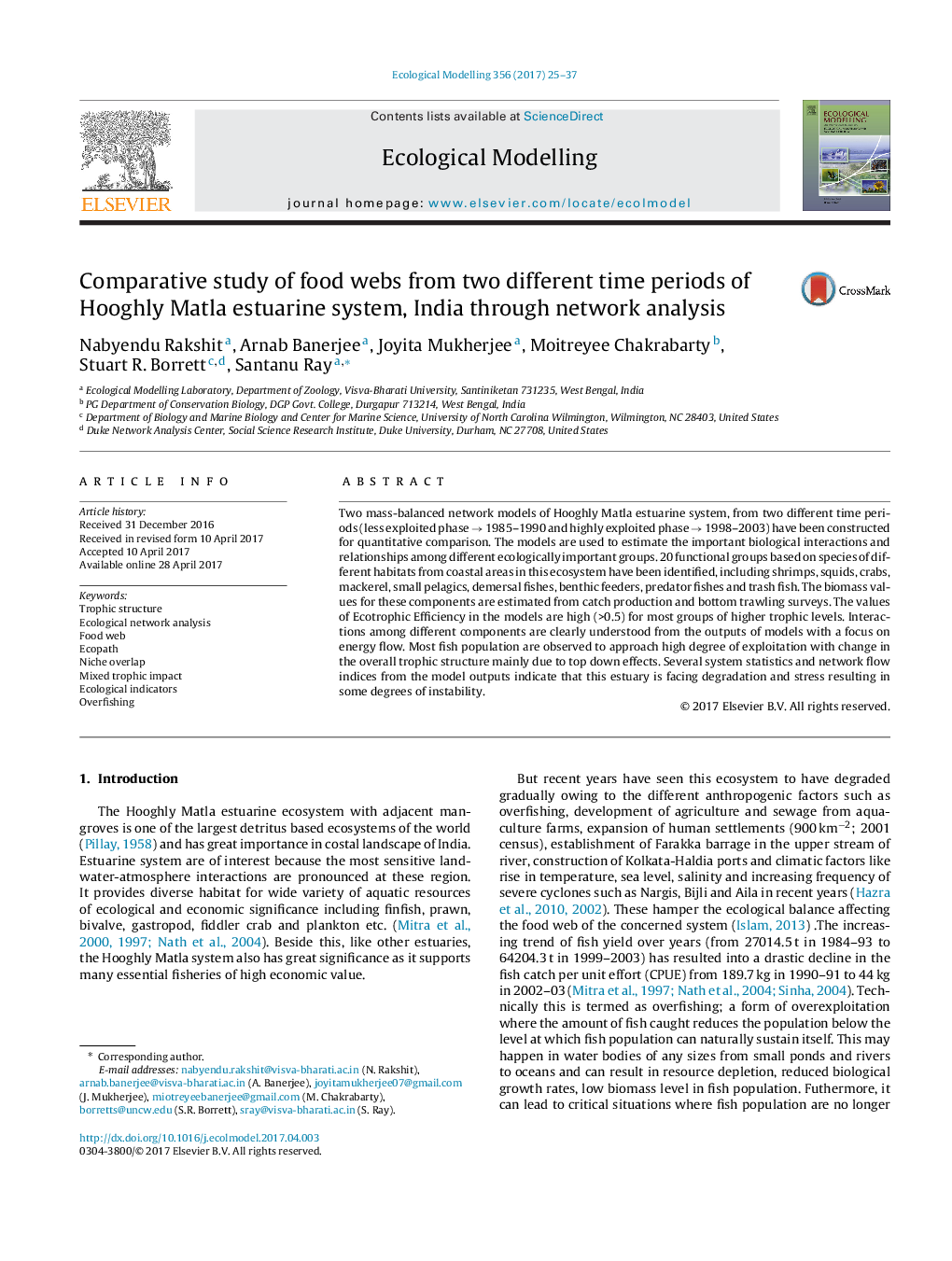| Article ID | Journal | Published Year | Pages | File Type |
|---|---|---|---|---|
| 5742200 | Ecological Modelling | 2017 | 13 Pages |
â¢Two different food web model from two different time periods for Hooghly estuary are developed.â¢The models present the nature of this estuary's trophic structure and functioning.â¢The network models represent the key players in this ecosystem.â¢The trophic flow models bring forth the vulnerabilities of the system.â¢These models serve as the base for developing sustainable fisheries management.
Two mass-balanced network models of Hooghly Matla estuarine system, from two different time periods (less exploited phase â 1985-1990 and highly exploited phase â 1998-2003) have been constructed for quantitative comparison. The models are used to estimate the important biological interactions and relationships among different ecologically important groups. 20 functional groups based on species of different habitats from coastal areas in this ecosystem have been identified, including shrimps, squids, crabs, mackerel, small pelagics, demersal fishes, benthic feeders, predator fishes and trash fish. The biomass values for these components are estimated from catch production and bottom trawling surveys. The values of Ecotrophic Efficiency in the models are high (>0.5) for most groups of higher trophic levels. Interactions among different components are clearly understood from the outputs of models with a focus on energy flow. Most fish population are observed to approach high degree of exploitation with change in the overall trophic structure mainly due to top down effects. Several system statistics and network flow indices from the model outputs indicate that this estuary is facing degradation and stress resulting in some degrees of instability.
